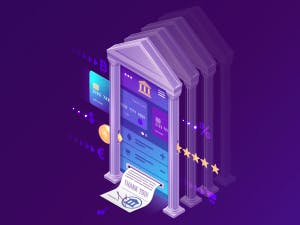Imagine having the power to not only attract more customers to your e-commerce mobile app but also to deeply understand their behaviors and preferences. This blog explores customer experience tools for mobile testing that provide actionable customer insights, enabling you to make data-driven decisions that propel your mobile e-commerce growth to new heights.
The good old A/B testing helps you determine what works and what doesn't for your audience to achieve that. Using tools for A/B testing mobile apps, you can design randomized trials with two or more versions to evaluate the effectiveness of various options and choose which is ideal for your mobile app.
Around 75-80% of professionals who conduct A/B testing believe they are getting valuable insights and actionable results from their tests. However, it's important to note that while many people feel confident in their results, studies also suggest that many A/B tests are not set up or interpreted correctly, leading to misguided conclusions. Ensuring that tests are statistically valid and properly analyzed is crucial for deriving genuine value from A/B testing.
Testing Methods and Decision-Making
Quick Checklist:
- What is it – split testing, bucket testing, guessing vs. testing
- Comparing performance and user response
- Data-driven feature decisions
- Conversion Rate Optimization (CRO)
- Experience optimization
- UI visitor effect – effect of multiple winning changes
Are You Guessing or Testing?
A/B testing, also called split testing or bucket testing, is a type of randomized experimentation in which two or more iterations of a variable (e.g., a web page or page element) are simultaneously shown to various website visitor segments to ascertain which version has the greatest influence and influences business metrics.
Data-driven judgments can be made with split testing. You can demonstrate that a single alteration increases audience engagement because you are just testing one component at a time.
Guessing is based on subjective judgment and intuition, frequently influenced by one's experiences or views. Although educated estimates can provide insightful information, they need more empirical precision for sound decision-making. In contrast, testing calls for a methodical, data-driven approach but produces more consistent results.
Conversion Rate Optimization
Conversion Rate Optimization (CRO) is a tactical method designed to maximize a website's or digital platform's ability to convert visitors into desired activities, such as buying something or subscribing to a newsletter. A/B testing, which systematically examines two or more versions of a webpage or element to ascertain which performs better in reaching the intended conversion goals, is a key component of CRO. By experimenting with different layouts, contents, or design aspects, marketers and designers can objectively evaluate how these changes affect user behavior through A/B testing.
Experience Optimization
The cornerstone of retail is the customer experience. Whether you manage an online store or an offline business, your main objective should be to give customers an outstanding experience so they will return. But you can't know what your clients want if you don't try new things. By using A/B testing, you may determine which aspects of your mobile app are unappealing to users. This way, you modify the app based on your users' preferences, maintaining their connection to your service.
You must thoroughly test a series of alterations to the app to see which version improves your essential metrics. Key performance indicators (KPIs) to watch include monthly active users, retention rate, and drop-offs, ensuring you constantly deliver wonderful user experiences. In this manner, when developing your roadmap for mobile app development, you are relying on data-driven decisions. Therefore, testing will guarantee you have answers on how to improve your in-app experience, whether it's a straightforward front-end modification like where to put your CTA button or a comprehensive redesign of your search algorithm.
UI Visitor Effect
In A/B testing, the phenomenon known as the "UI Visitor Effect" describes how several successful UI changes add up to a more significant effect on visitor behavior. The simultaneous implementation of different winning versions can result in a more substantial improvement in the user experience due to the positive outcomes.
Testing Process and Segmentation
Quick Checklist:
- Process: test, validate, release, repeat
- Segmenting tests
- Risk mitigation
Image 1 shows the major steps needed in the mobile app testing process. You might consider adopting this as a regular procedure to optimize your advertisements and app.

Let’s look at the major phases in moving your mobile e-commerce app to its full potential.
Gather Information
Your analytics program frequently offers guidance on where to start optimizing. It helps to begin with high-traffic regions of your website or application to enable you to collect data more quickly. Be sure to use sites that can be improved, such as those with high bounce or drop-off rates, when optimizing conversion rates. When looking for fresh areas for improvement, examine additional resources such as surveys, social media, and heat maps.
Establish Objectives
The measurements you use to assess whether a variant version is more successful than the original depending on your conversion goals. Accordingly, you must define a solid set of objectives before making changes and running tests.
Create a Test Hypothesis
After deciding on a target, you should start developing concepts for A/B testing. The test hypotheses are based on strategies you believe will outperform the current iteration.
Craft Various Iterations
Modify a desired section of your website or mobile app using your chosen A/B testing software platform. Most of the top A/B testing software tools mentioned later include a visual editor that simplifies these modifications. You can verify that the various versions of your experiment perform as intended by conducting a test run.
Conduct an Experiment
The control or variant version of your newly crafted experience will now be randomly given to your app users. To ascertain how well each version performs, you must count and measure user interaction with each event and compare it to your baseline.
Be Patient!
Getting a good result may take some time, depending on the size of your sample (the target population). You are ready for the next step when experiment results are reliable and statistically significant.
Examine the Test Outcomes
When your experiment is over, it's time to examine the findings. The data from the trial will be displayed by your A/B testing software, allowing you to gauge performance differences between the two versions and whether or not there was a statistically significant difference.
Determine Segmentation
Segmentation is frequently used in A/B testing for larger applications. It can be based on any of a wide array of characteristics. Common characteristics used to determine segmentation include behavioral, demographic, technographic, or geographic.
Segmenting facilitates a deep understanding of your audience, allowing you to conduct fine-grained experiments and provide them with better and more pertinent experiences. Your ideal user base will become more visible as the results are analyzed. The analysis will help you focus your optimization and marketing efforts in the future.
On the other hand, designing test audiences that are too small is a common error made in A/B testing. As a result, it may take some time to obtain statistically significant findings and determine the effect of your modification on a specific visitor. Therefore, verifying the size of your segments before beginning an experiment is crucial to avoid false positives.
Tools and Use Cases
Quick Checklist:
- Fosters continuous improvement culture
- Popular tools
- Example use cases
Popular Tools
Building a house without a hammer and a chainsaw will take longer and be more complicated than you imagined initially. The same holds for maximizing your app usage without knowing which tools you should use and where to look.
- What do you need?
- How much help might you and your group require?
- What kind of integrations are planned?
Adobe Target
Adobe Target is a platform for testing and customization. Target easily connects to both Adobe Audience Manager and Adobe Analytics. You can utilize it to optimize your app experiences based on user behavior, increasing engagement.
VWO
VWO Mobile App Testing is a reliable option for optimizing mobile apps. You can quickly test important features before and after launch and experiment with many iterations of in-app user experiences (both UI and server-side).
Apptimize
With Apptimize, you can test your ideas across several channels and platforms, including apps, mobile websites, websites, and over-the-top content.
Kibo
Kibo, formerly Monetate, is a well-known A/B testing tool created specifically for marketers. With the help of the solution's robust backend testing and segmentation engine and user-friendly interface, you can create captivating and immersive customer experiences that boost revenue and conversion rates.
Optimizely
Optimizely has practical capabilities that let users make modifications without saving them in the relevant app stores. Its compatibility with desktop, mobile, and Android web and iOS browsers is the main factor contributing to its popularity.
Use Cases
Above all, you must understand your user’s behavior and how every digital experience you create is affected by it:
- Which types of virtual experiences are you creating?
- How is each interaction guiding your visitors toward the point of purchase?
- How does the current experience affect the user journey?
The tables presented in the sections below summarize use cases where testing tools can be applied for the best effect.
Retail Industry
| Desired Outcome | Suggested Strategy |
|---|---|
| Boost the number of products seen | Expand the navigation options to include every subcategory. |
| Boost the pace of add-to-cart | Employ lifestyle photos for your merchandise rather than typical studio shots. |
| Increased conversion rates | Apply social proof to essential products by showing the quantity of recent purchases. |
| Raise the order value average | Test several cutoff points to see if you qualify for free shipping. |
| Reduce the bounce rate | Customize the landing page according to the advertisement's offer. |
Table 1: Retail Industry Strategies and Outcomes
Travel Industry
| Desired Outcome | Suggested Strategy |
|---|---|
| Boost participation in loyalty programs | Display flights, allowing patrons to advance to a higher level of loyalty. |
| Boost reservations through search engine optimization | Display an interactive map that has timely low rates. |
| Boost reservations through conversion rate improvement | Emphasize the many seat options found in the search results. |
Table 2: Travel Industry Strategies and Outcomes
B2B Environment
| Desired Outcome | Suggested Strategy |
|---|---|
| Boost the quantity of leads generated | Provide limited-time free trial and personalized value offers to users. |
| Additional forms filled out | Reduce the 'required' field count in your acquisition forms. |
Table 3: B2B Environment Strategies and Outcomes
Media Sales
| Desired Outcome | Suggested Strategy |
|---|---|
| Boost the number of articles on each visit | Show similar articles to the visitors who highlight or hover over specific text. |
| Boost interaction | Retell the main tales when you return. Encourage audience/visitor engagement through comments, shares, infographics, short videos, and images from user history. |
| Lower bounce rate | Test different iterations and draw attention to popular article comments. |
| Boost the amount of content per visit | Change the primary navigation categories to reflect current trends. |
| Boost the rate of subscriptions | Conduct tests within the paid model's threshold parameters to determine the number of articles consumed. |
Table 4: Media Strategies and Outcomes
Conclusion
By leveraging the insights from this blog post, you're in an excellent position to select the perfect blend of tools that not only streamline the experimentation process but also maximize user engagement and conversion rates. Get ready to transform your approach to e-commerce with strategies that are as precise and effective as the tools in an artisan's belt. You're now ready to build an e-commerce mobile app that stands the test of time and competition.




